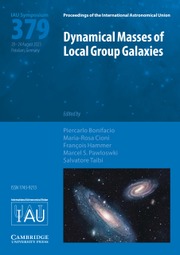No CrossRef data available.
Article contents
Spectroscopic binary mass determination using relativity
Published online by Cambridge University Press: 06 January 2010
Abstract
High-precision radial-velocity techniques, which enabled the detection of extra-solar planets, are now sensitive to the lowest-order relativistic effects in the data of spectroscopic binary stars (SBs). We show how these effects can be used to derive the absolute masses of the components of eclipsing single-lined SBs and double-lined SBs from Doppler measurements alone. High-precision stellar spectroscopy can thus substantially increase the number of measured stellar masses, thereby improving the mass-radius and mass-luminosity calibrations.
Keywords
- Type
- Contributed Papers
- Information
- Copyright
- Copyright © International Astronomical Union 2010


